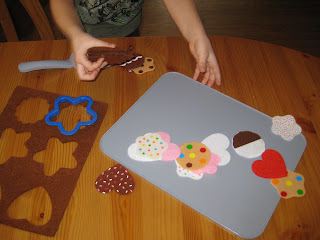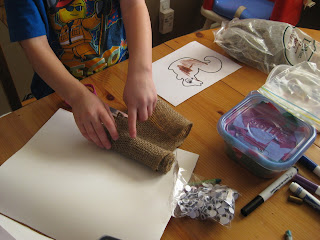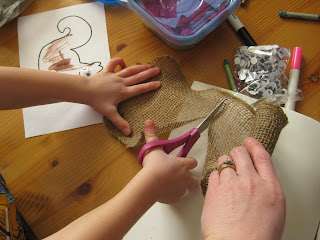It used to be widely believed that learning math skills early in life was best achieved by use of flashcards or workbooks. Researchers in the past few years have learned a lot about the way that young children gain and process numeracy skills, and educational systems are following suit by adapting their programs and curriculum's to model the results of this research.
So what can we, as professional child care givers do to increase the numeracy skills of the preschool and young school age children in our care?
It's not as hard - and much more fun - than at first it may sound.
In fact, you probably have most of the materials right on hand in your own home. Maybe you've already incorporated some of the basic methodology. If you have children aged about 4 - 8 in your home (whether your own, or under your care), chances are they no longer nap. This is the prime opportunity to pull out activities such as these that will give them a head start, or encourage the skills they are already gaining at school.
There is a lot of information on this topic (too much for one blog post), and I would encourage you to go research it further. But to give you a taste at how easy it is to incorporate these types of activities, here is a look at some of the fun games we play in the afternoon (I have two kindergarten age children in care while three toddlers are napping after lunch).
The best part? They're learning sportsmanship skills and math, spending quality time with you, and having fun all the while...
Subitizing: This is the fancy word for the skill that allows to read a dice at a glance (in other words, we recognize a six on a die or a domino without having to count each individual dot). Best way to gain this skill? Play games with dice and dominoes (the younger the child, the less dice you require them to roll).
Game: Horse Race - using an empty ice cube try and two small plastic animal figurines, have each child roll dice simultaneously. The child with the higher number (encourage them to tell you what they rolled) gets to move one spot in the 'race track'. A tie results in no one moving. First one to reach the other side wins. To increase the difficulty for older children, have them roll two dice and add the numbers.
Game: Take Away - using a numbered strip of paper, dice and small plastic figurines (or blocks, or coins, or whatever you have on hand), have the children set all the animals up, from 1-20. Then they each take turns rolling, and taking away the number of animals that matches their roll. First one to take away to zero wins!
Game: The Parking Lot - this is similar to take away, and you can use cut out paper cars like here, or actual toy cars. This teaches ten frame skills, which will be useful in grade 1/2. We like to roll the dice, and park the corresponding number of cars. The first to properly fill their lot ( and you have to roll the exact number at the end - if there are only three spots left, you have to roll a three or less), wins!
Games: Board and Card Games - Don't be afraid to go through your closet and pull out family favorites, such as UNO, Go Fish, Candyland, Memory, Etc. Or, head down to the local thrift store to see what others have donated.
Anything that uses numbers, patterns or matching, and has simple rules with little text or clear symbols, can make a great preschool game. These two can't get enough of bright and colorful UNO, and many days you can find us playing and exciting game of WAR (with the Kings, Queens, Jacks and Jokers removed from the deck). They are learning number correspondence, greater than/less than, and fair game play, and they are having fun while they are at it.















































